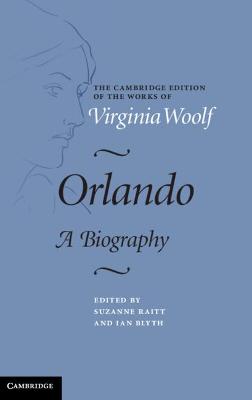Orlando Synopsis
Orlando, a novel loosely based on the life of Vita Sackville-West, Virginia Woolf's lover and friend, is one of Woolf's most playful and tantalizing works. This edition provides readers with a fully collated and annotated text. A substantial introduction charts the birth of the novel in the romance between Woolf and Sackville-West, and the role it played in the evolution and eventual fading of that romance. Extensive explanatory notes reveal the extent to which the novel is embedded in Woolf's knowledge of Sackville-West, her family history and her writings. Thorough annotation of every literary and historical allusion in the text establishes its significance as a parodic literary and social history of England, as well as a spoof of one of Woolf's favorite forms, the biography. It also includes all variants from the extant proofs, as well as editions of the novel produced during Woolf's lifetime.
About This Edition
About Virginia Woolf
Virginia Woolf is now recognized as a major twentieth-century author, a great novelist and essayist and a key figure in literary history as a feminist and a modernist. Born in 1882, she was the daughter of the editor and critic Leslie Stephen, and suffered a traumatic adolescence after the deaths of her mother, in 1895, and her step-sister Stella, in 1897, leaving her subject to breakdowns for the rest of her life. Her father died in 1904 and two years later her favourite brother Thoby died suddenly of typhoid.
With her sister, the painter Vanessa Bell, she was drawn into the company of writers and artists such as Lytton Strachey and Roger Fry, later known as the Bloomsbury Group. Among them she met Leonard Woolf, whom she married in 1912, and together they founded the Hogarth Press in 1917, which was to publish the work of T. S. Eliot, E. M. Forster and Katherine Mansfield as well as the earliest translations of Freud. Woolf lived an energetic life among friends and family, reviewing and writing, and dividing her time between London and the Sussex Downs. In 1941, fearing another attack of mental illness, she drowned herself.
Her first novel, The Voyage Out, appeared in 1915, and she then worked through the transitional Night and Day (1919) to the highly experimental and impressionistic Jacob’s Room (1922). From then on her fiction became a series of brilliant and extraordinarily varied experiments, each one searching for a fresh way of presenting the relationship between individual lives and the forces of society and history. She was particularly concerned with women’s experience, not only in her novels but also in her essays and her two books of feminist polemic, A Room of One’s Own (1929) and Three Guineas (1938).
Her major novels include Mrs Dalloway (1925), the historical fantasy Orlando (1928), written for Vita Sackville-West, the extraordinarily poetic vision of The Waves (1931), the family saga of The Years (1937), and Between the Acts (1941).
More About Virginia Woolf
